What is Call Center Quality Monitoring & Why it Matters

Team Lead, Support QA and Development
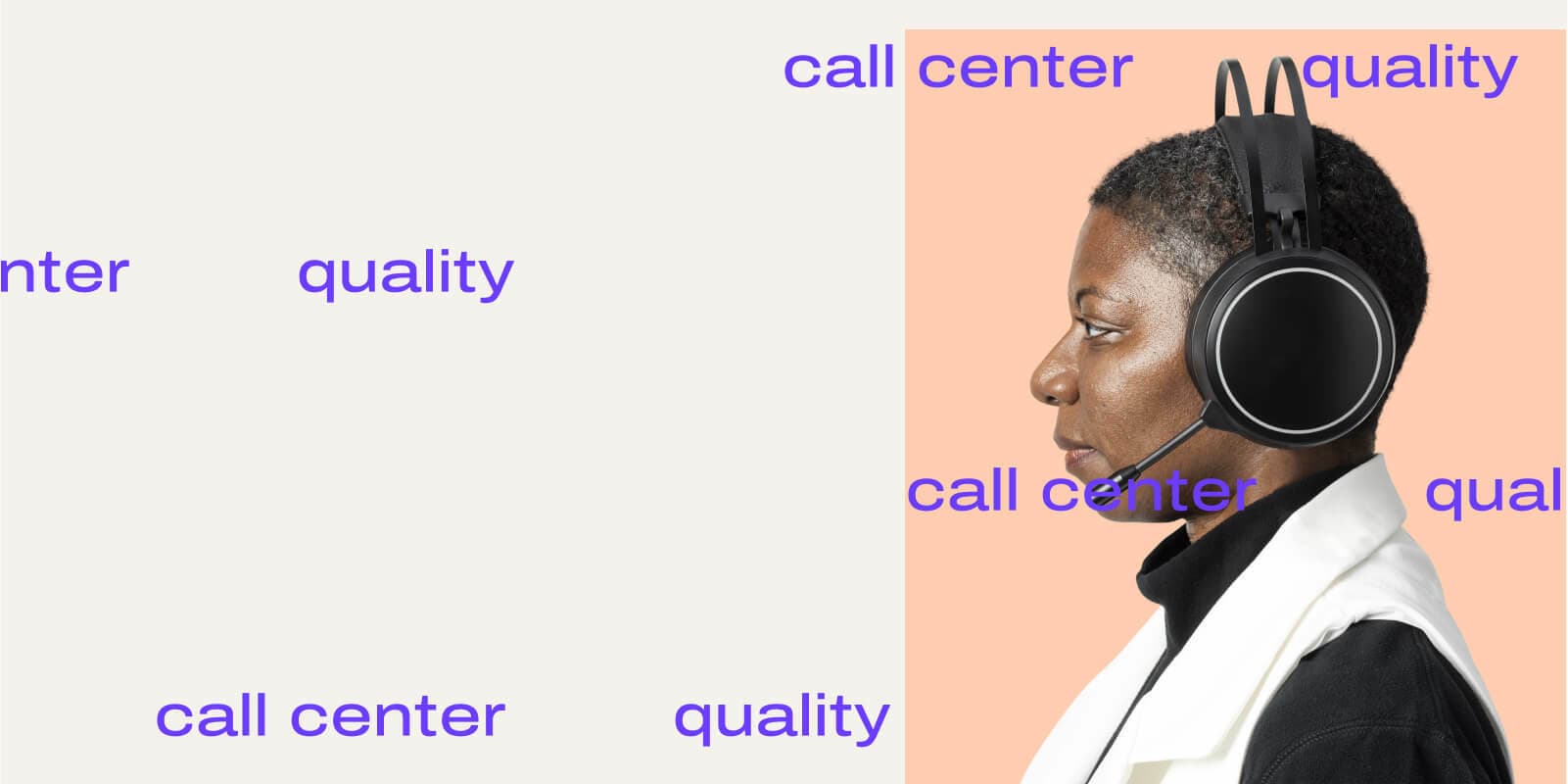
Tags
Share
Supervisors and managers who oversee call centers are responsible for hundreds, sometimes thousands, of calls every day. And with many call center teams working remotely, maintaining the quality of every interaction can be a significant challenge.
This is where having a solid call center quality monitoring process is crucial.
Call center quality monitoring is the system or processes by which a business ensures that every conversation with a customer or prospect meets a certain standard, whether that’s measured by how quickly the customer’s issue is solved, how accurately the agent answers questions, and/or any other combination of metrics. If it’s done well, call center or contact center quality monitoring plays a key role in improving customer satisfaction, helping supervisors coach agents more effectively, and keeping your business compliant with legal and industry regulations.
Keep reading to learn about how to do call quality monitoring well, including tips, helpful tools, and more.
Why quality monitoring is important to your call center
The rewards of investing in call center quality assurance are tangible on multiple business levels. Not only does it provide a clear picture of how agents are engaging with customers, it also highlights where you can improve training, onboarding, and documentation for new hires.
Here’s a closer look at the benefits of call center quality management:
Improved agent performance – Regular quality monitoring produces actionable insights that you can use both to train both new and seasoned agents.
Dialpad’s contact center platform, for example, has Ai tools that help with this by tracking specific keywords or phrases. Say a supervisor wants to see how agents are handling churn-related conversations. They can set up a “Custom Moment” to flag calls where “cancel” or “refund” is spoken, dig into the transcripts for these calls, and better understand where agents may need more coaching to retain customers.
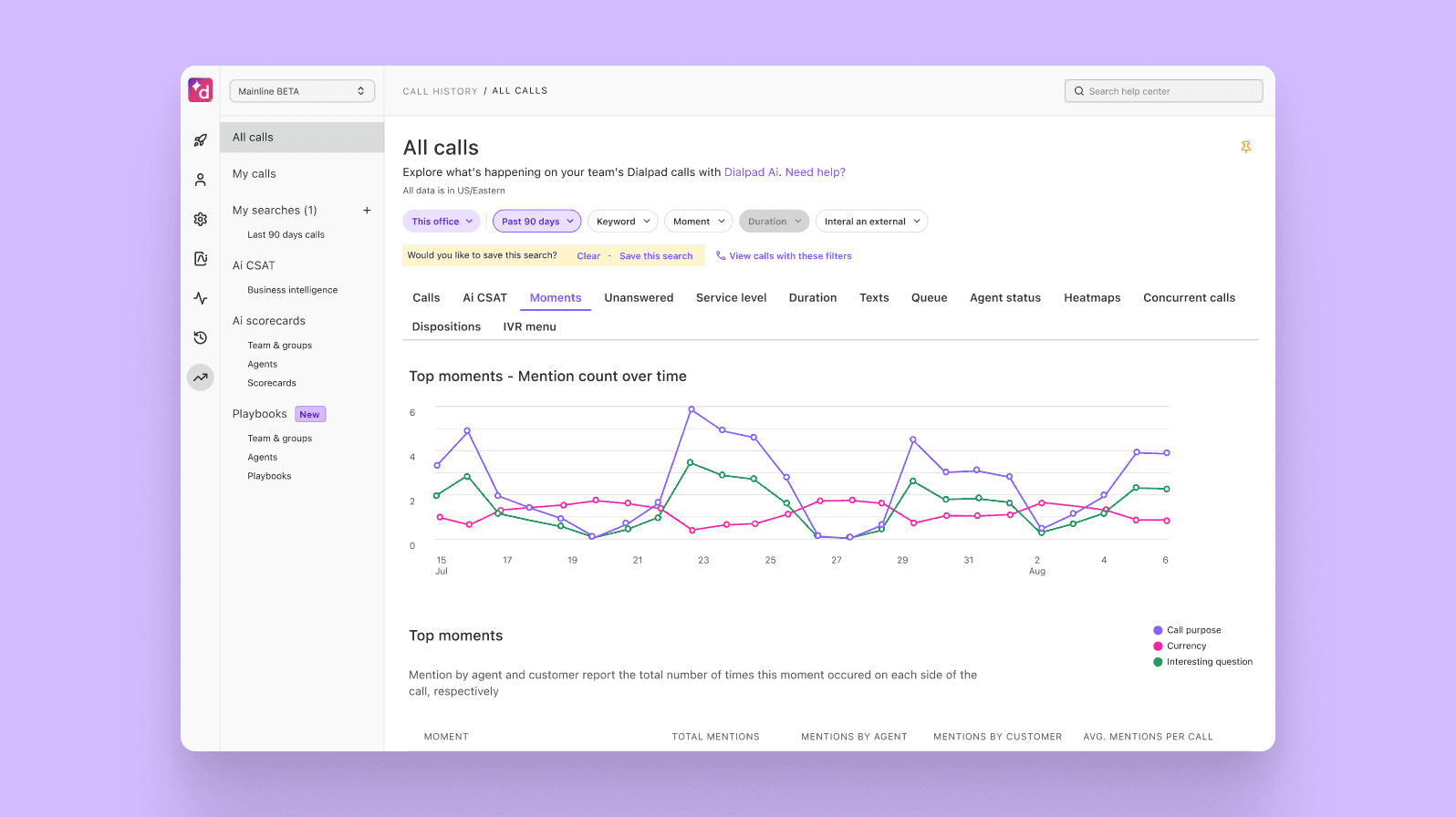
Enhanced customer satisfaction – According to research from PwC, customer experience is a prominent factor in nearly three-quarters of purchasing decisions. Respondents to the survey also said that they’d be willing to pay a price premium averaging 16% for a good customer experience. And interestingly, nearly two-thirds—63%—said they’d be willing to share extra information with a business that provided them with a positive customer experience
Reduced costs – The more that agents can provide a good experience on the first try, the less businesses have to spend on following up and fixing mistakes. “[Dialpad’s] Ai features like transcription, sentiment analysis, and real-time assistance have drastically reduced time spent on calls and improved the quality of our customer interactions,” says Josh Gilmore, VP of Customer Experience at RE/MAX.
Compliance and adherence – A robust quality monitoring system, supported by the right tools, is also vital for maintaining compliance—especially in highly regulated industries like healthcare and finance. Look for Ai tools that can detect agent adherence to preset playbooks or scripts, like Dialpad’s Ai Playbooks:
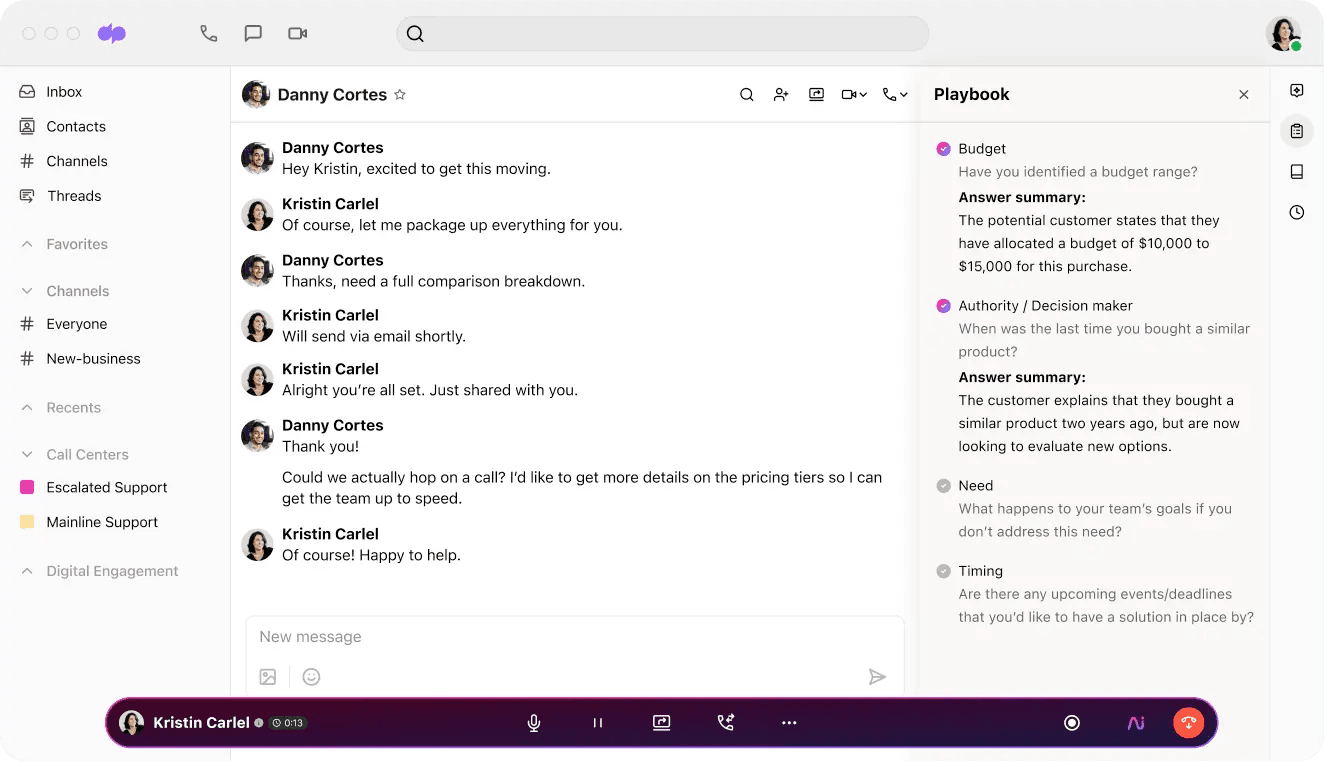
Data-driven decision making – Finally, call center quality management provides an important foundation of data. With conversational insights gathered over time, contact center and business leaders can get both the qualitative and quantitative context they need to make objective decisions and maximize opportunities.
How does quality monitoring support your call center team?
From junior agents to managers to supervisors, everyone on the team has a role to play in contact center quality monitoring—but equally importantly, everyone can also benefit by leveraging quality monitoring insights to work more effectively and efficiently.
Here’s how every member of the team can get the most out of quality monitoring.
Managers
Call center managers are usually tasked with the responsibility of directly overseeing the call review process and making sure the relevant insights gained from it are acted upon.
Managers can use quality monitoring to determine and monitor relevant performance benchmarks and metrics for both individual agents and teams as a whole.
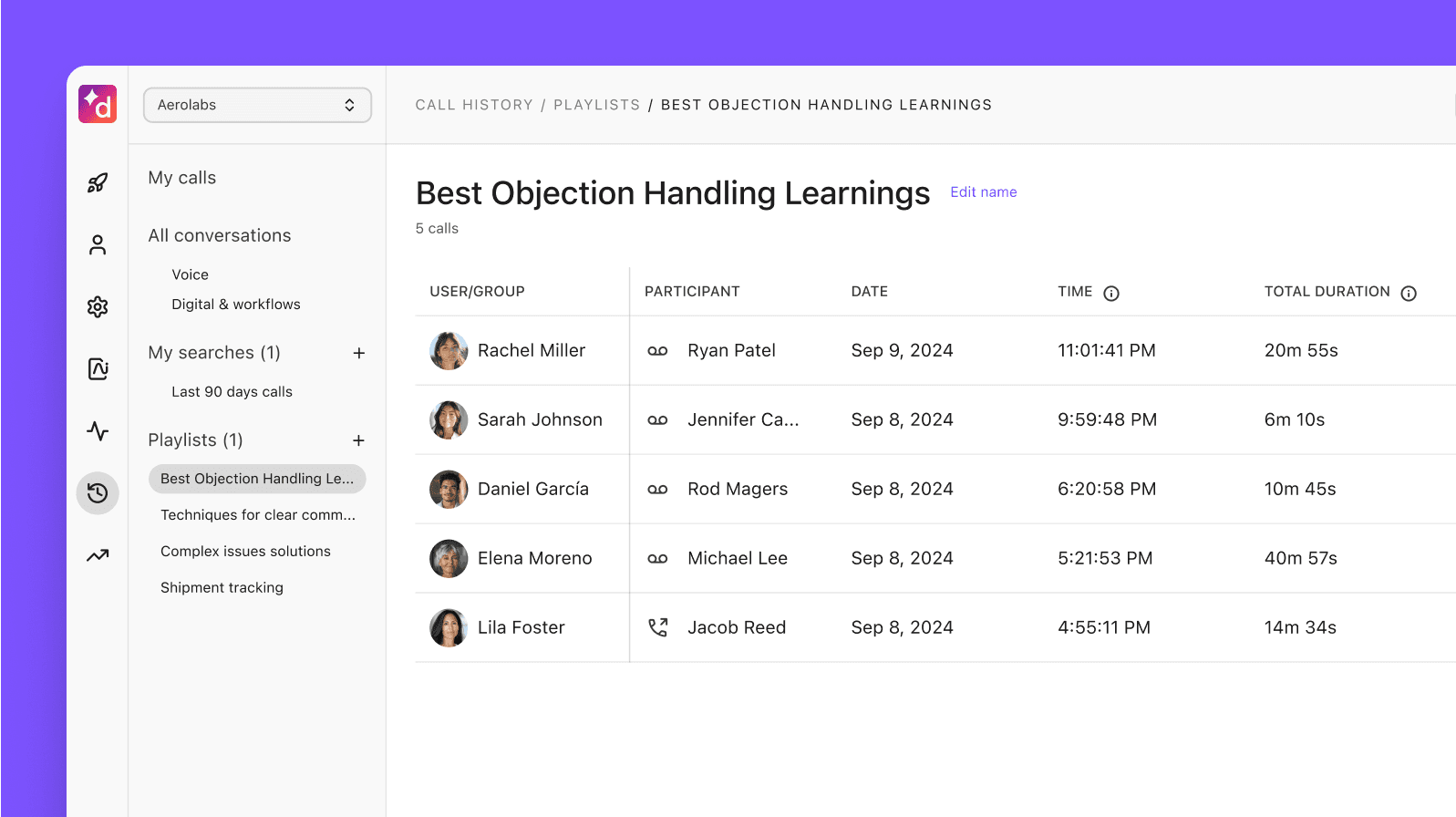
👉 Dialpad tip:
Dialpad facilitates better quality management for my call centers by automatically capturing and summarizing agent interactions, which requires less effort on the part of my managers to review call recordings and identify opportunities. It also stores all historical data in the cloud, allowing us to easily search through old records.
Agents
Agents can use quality monitor tools to access their performance data, to see where they need to improve. This can be a powerful motivating tool.
Your call center might even create some friendly competition by setting up league tables, and giving agents extra incentives for reaching certain benchmarks. Agents who are able to look in detail at their own performance and that of their colleagues will have a clearer idea of where they stand. This isn’t for every call center though, as it can create more stress for agents. Gauge your team first.
For example, Dialpad Support’s call and screen recording tool helps make it easier for my agents to review how their calls went and make note of things they should keep in mind the next time a similar question comes up.
That way, they never have to worry about losing important customer information. They can listen to the recordings from any device using the Dialpad app. Plus, all our call center features are in the same unified communications app that agents use to video call and message with their teammates. It’s a way more streamlined and productive way to work.
Executive management
While their role is more indirect, executives have a vital role to play in ensuring that call quality monitoring processes match the wider objectives of the business. They oversee the development of business operations and the setting of appropriate targets—which trickle down to your contact center goals.
With the right metrics and benchmarks, executives can use quality monitoring to inform recommendations for future budgets are backed by solid data.
What should you monitor to ensure call center quality?
When it comes to ensuring contact center or call center quality, there are a few metrics to consider. Every contact center is different and depending on your size, industry, and so on, the specific set of metrics relevant to your business may look different from those your competitors use.
In general, your contact center quality monitoring should include metrics related to three key areas: customer satisfaction, agent performance, and compliance. Here are a few examples of what to monitor under these buckets:
First call resolution (FCR) – This is a particularly important yardstick, as high rates of first-call resolution are generally good for customers. This is because their issues are resolved in a single interaction, rather than over repeated calls.
Average handle time (AHT) – How long does it take your agents, on average, to handle a call? This isknown as average handle time, or AHT. However, this metric shouldn’t be used in isolation—a short call isn’t necessarily a good one, as some issues might not be resolved—but should be looked at alongside customer satisfaction.
Customer satisfaction (CSAT) – Most companies are familiar with CSAT. It’s one of the most popular customer satisfaction metrics. Traditionally, companies had to send out CSAT surveys to customers and rely on their responses, but today, Ai tools like Dialpad’s Ai CSAT can accurately infer customer satisfaction from conversations, which means you can get a much larger (and more representative) sample size:
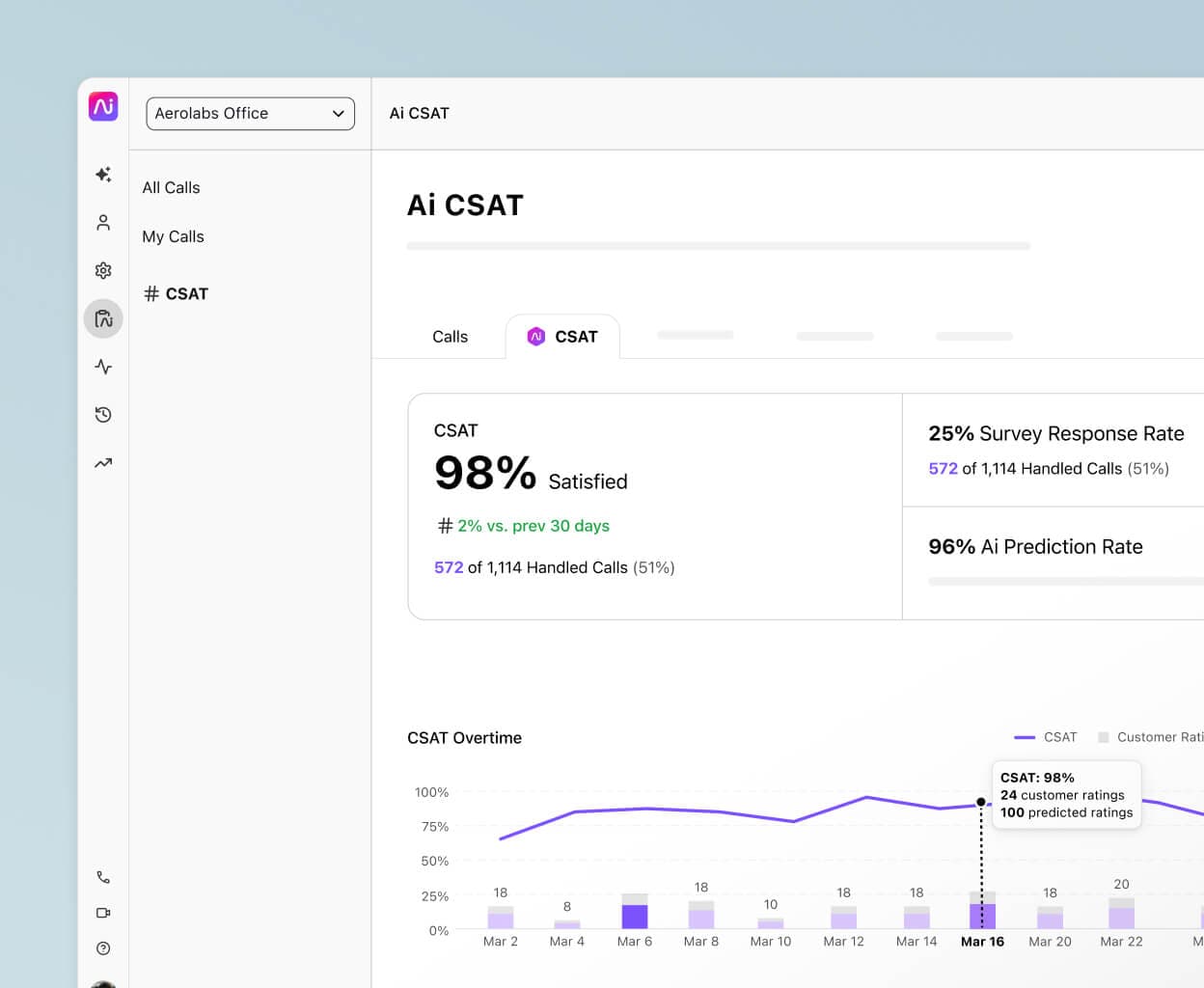
Net Promoter Score (NPS) – Your net promoter score tells you the likelihood that customers will recommend you to their networks.
Compliance and policy adherence (e.g., HIPAA, GDPR) – This one is a little different because there isn’t a conventional quantitative metric you can track—to monitor compliance, your supervisors used to have to manually check every call recording or transcript to see whether agents are following your company’s or industry’s policies. Today, though, Ai can take on a lot of this work to free up time for your team (like through Dialpad’s Ai Playbooks).
What tools and software support call center quality management?
Having the right call center quality assurance tools pays off in a variety of measurable ways across your business, making it easier to get visibility into how agents interact with customers while also helping leaders identify opportunities to improve processes and workflows.
Here are some examples of tools that support different aspects of call center quality management:
Agent performance: Ai-powered coaching
Dialpad Ai can do more than just track specific keywords or phrases. It can also provide guidance in real time, offering talking points or relevant supporting content to agents as they’re talking to customers. With Ai Live Coach, even new agents can jump into handling calls more confidently (without having to memorize the entire knowledge base first).
Customer satisfaction: Call summaries and transcripts
Today, agents no longer have to spend time taking down notes after every call. Ai-powered transcripts and summaries are automatically generated instantly after a conversation ends, with key details and action items already highlighted—and you can make a very persuasive argument that these are non-negotiable features in call center quality software today. Here’s a quick look at what an Ai call summary in Dialpad looks like:
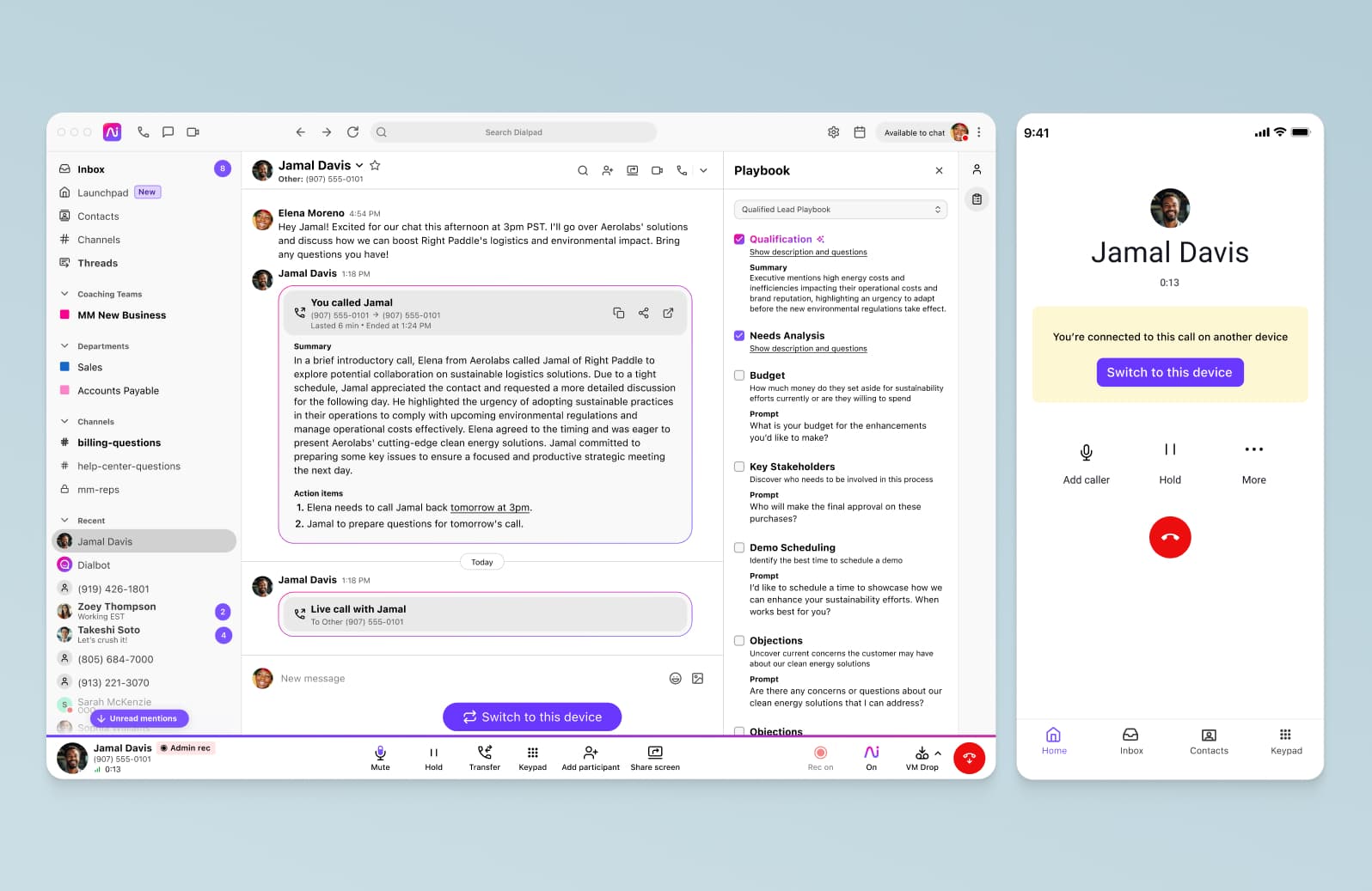
First call resolution: Call routing
Good contact center software should come with call routing capabilities that use Ai and/or skills-based logic to direct calls to the most qualified available agent, increasing the chances of resolving customer issues on the first try. And while Ai capabilities will vary, on a basic level it should include functionality like different routing options and callbacks, and be easy to set up without the help of an IT team.
Average Handle Time (AHT): Call analytics and dashboards
Withreal-time dashboards and call analytics, you can track metrics like AHT, CSAT, and FCR more easily across agents and teams. This data enables faster decision-making and more effective responses, especially during busy periods like holidays or peak business hours.
Compliance and policy adherence: QM / QA scorecards
To help busy supervisors and QA teams with compliance, Ai is a must-have. Dialpad’s QA Scorecards, for example, automate the quality assurance process by tracking agent adherence to scripts, compliance requirements, and customer service best practices:
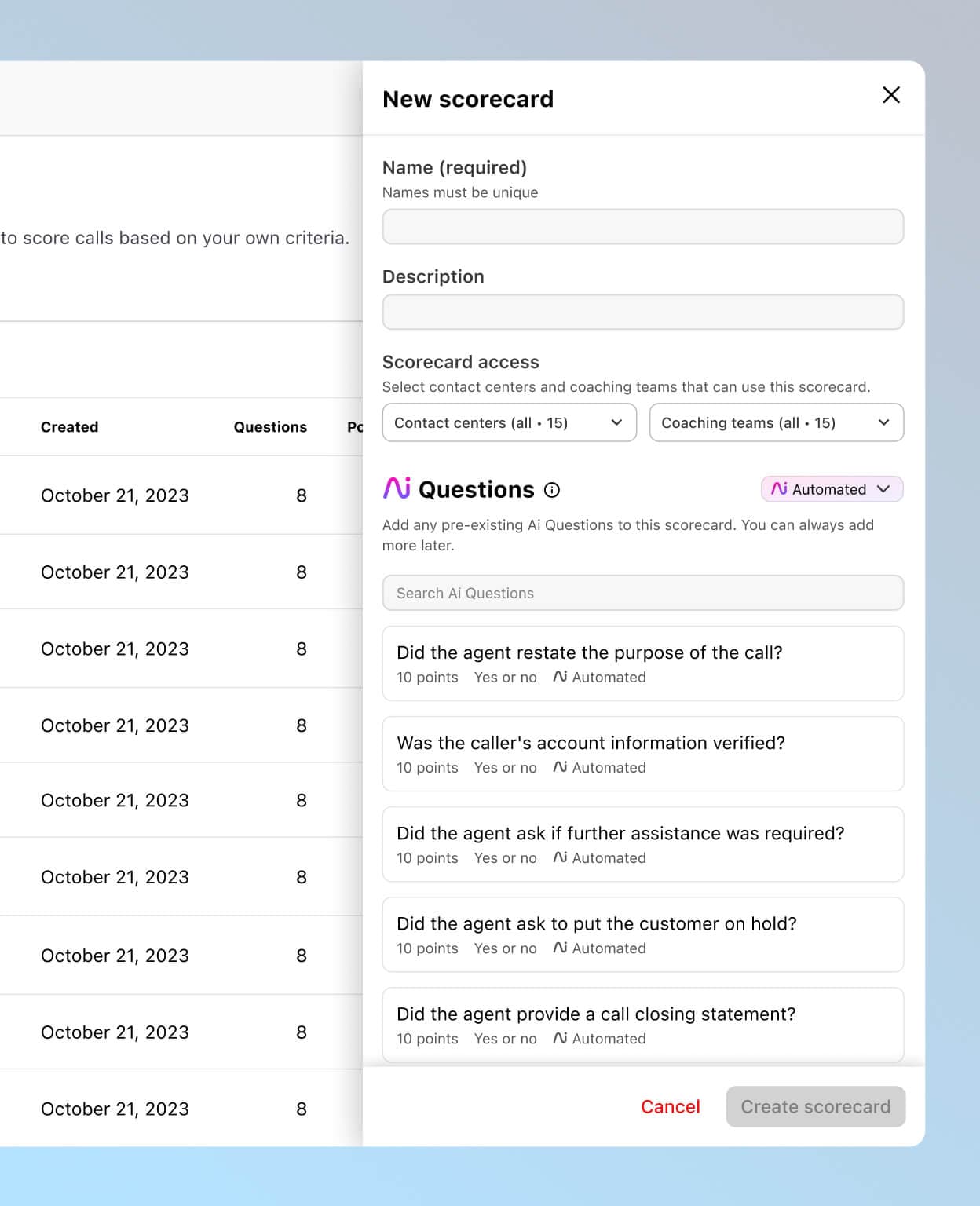
This can dramatically reduce manual auditing time while still helping maintain regulatory alignment.
Take your call center quality monitoring to the next level
A robust call center quality monitoring process could have a number of significant upsides for your business. It can allow you to highlight problems across teams and with individual agents, which then enables you to develop strategies to address those problems. It can help streamline and improve the entire customer service process.
What’s crucial, above all, is that your quality monitoring data doesn’t just sit on a database, and get forgotten about. You must translate it into action. In this way, you can drive up standards of customer service, as well as lightening the load on your agents. That’s how to really make call quality monitoring work for everyone involved.
Achieve better quality monitoring in your call center
See how Dialpad's AI-powered customer engagement platform can take low-value, repetitive tasks off your hands and help busy supervisors oversee agents more efficiently. Book a demo or take a self-guided interactive tour of the app on your own!
